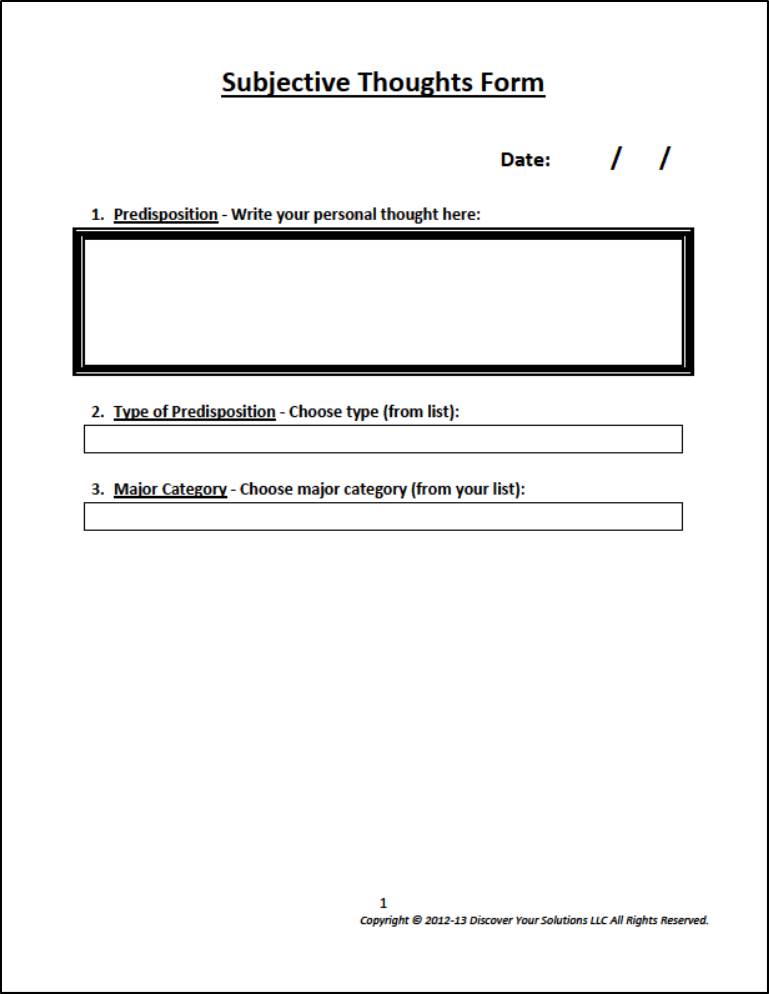
Predispositions Analysis
Optimize your thinking.

Challenging your Predispositions is a critical step in the problem-solving process.
To analyze your Predispositions:
Step 1: Make a list of your predispositions for each one of the following types: Intentions, Expectations, Assumptions, Intuitions, Opinions, Conclusions, Judgments, Beliefs, Hopes, and Gut Feelings.
Helpful Hint:
You should use the Subjective Thoughts Form in conjunction with the Predispositions Analysis tool. The purpose of this 7 page form is to analyze your Predispositions and Unquestioned Mental Models.
 ,
,
Word version of Subjective Thoughts Form.docx (Click link to download Word version).
PDF version of Subjective Thoughts Form.pdf (Click link to download PDF version).
Step 2: Choose ONE of your predispositions (from the lists above) that's at the heart of your issue.
Step 3: Split your predisposition into its polar opposites. You can do this by creating an extremely positive example of your predisposition and an extremely negative one.
Step 4: Take one of your polarized predispositions (i.e. your extremely positive example or your extremely negative example) and ask yourself, "How does this make me feel?" Write down your emotion.
Step 5: Next ask yourself, "I feel that emotion because?" Write down the reasons why you feel the emotion in Step 4. The goal here is to surface an unquestioned Mental Model.
Step 6: Take an unquestioned mental model from Step 5. "Are you willing to consider that your unquestioned mental model might be inaccurate?" If you answered 'No', then this whole exercise probably won't help you. You must be open-minded enough to consider that your mental models may have flaws to be able to optimize your mental models.
Step 7: What evidence supports your unquestioned mental model?
Step 8: What evidence refutes your unquestioned mental model?
Step 9: Do any parts of your unquestioned mental model seem uncertain?
Step 10: Under what circumstances might your unquestioned mental model be untrue?
Step 11: If any part of your unquestioned mental model turns out to be invalid, how much would that contribute to failure?
Step 12: Improve your unquestioned mental model with new variations, so it more accurately reflects your current thinking. Write down your optimized mental model.
Step 13: Repeat steps 4 thru 12 with your other polarized predispositions (i.e. your extremely negative example).


Sources:
Unlearning Ineffective or Obsolete Technologies, William H. Starbuck, Int'l Journal of Technology Management, 1996, 11: 725-737 (article).
